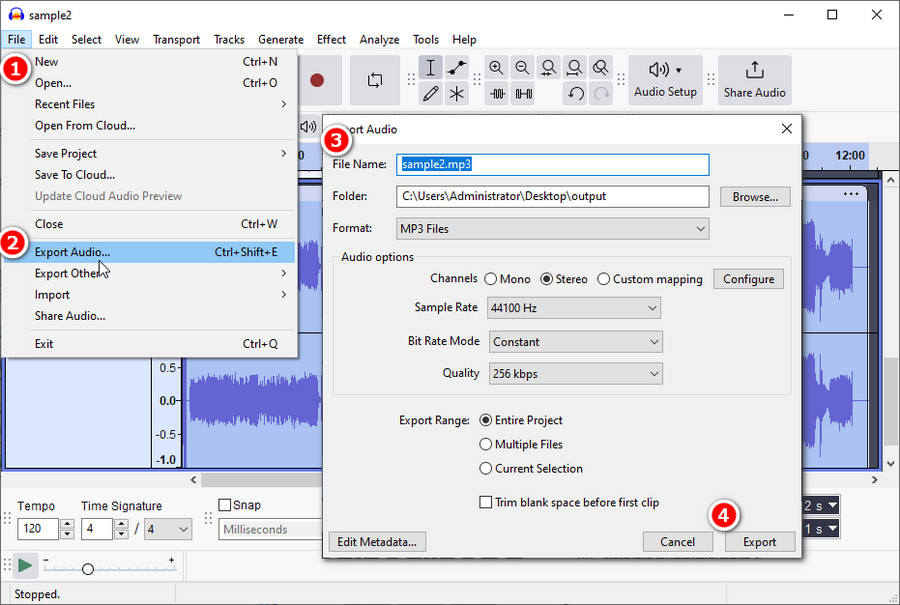Audacity is a free, easy-to-use, multi-track audio editor and recorder for Windows, macOS, GNU/Linux and other operating systems. The interface is translated into many languages. You can use Audacity to: Record live audio. Record computer playback on any Windows Vista or later machine.
- The LAME MP3 encoding library allows Audacity to export audio in the popular MP3 format. LAME is now bundled in with the latest Audacity version. The FFmpeg import/export library allows Audacity to import and export many additional audio formats such as AC3, AMR(NB), M4A and WMA, and to import audio from video files. Audacity 2.0.6 and later requires FFmpeg 1.2 to 2.3.x (or libav 0.
- Installing the FFmpeg Import/Export Library on Windows. The optional FFmpeg library allows Audacity to import and export a much larger range of audio formats including M4A (AAC), AC3, AMR (narrow band) and WMA and also to import audio from most video files. Because of software patents, Audacity cannot include the FFmpeg software or distribute it from its own websites.
- How to Merge MP3 Files in Audacity. Step 1 Open Audacity on Computer and Add MP3 Files. Having installed Audacity, double click to open it on your computer. Navigate to File Open to add the MP3 file you want to merge. Repeat the step to add another MP3 file, which will be shown in a new Audacity Window.
- 1.Audacity Audio File
- 2.Audio File
File Type 1Audacity Audio File
| Developer | Audacity |
| Popularity | |
| Category | Audio Files |
| Format | Binary |
What is a AU file?
An AU file is an audio file created by Audacity, a free, cross-platform audio editor. It is saved in a proprietary audio format used only by Audacity. AU files are part of Audacity projects, which are saved as .AUP files.
When you create or import an audio file into an Audacity project, Audacity automatically converts the file into an AU file. Each project's AU files are stored in that project's folder, which is named myproject_data.
The myproject_data folder also contains your project's AUP file, which is named myproject.aup. When you open your AUP file in Audacity, Audacity automatically searches for and loads the AU files your project includes. If you've moved an AU file that was previously stored in the myproject_data folder, Audacity will show an error message when you open your AUP file.
After you've finished editing your Audacity project, you can export the audio the project contains as an .MP3, .WAV, .M4A, or other common audio file. This is the easiest way to convert the audio saved in an AU file into an audio file that can be played in other audio players.
NOTE: As of version 3.0, Audacity no longer saves AU files that users can access. Instead, Audacity saves all of a project's files within a single .AUP3 file, instead of within a myproject_data folder.
How do I open a AU file?
AU files are not meant to be opened individually. Instead, you should open the Audacity (cross-platform) project that uses your AU file. To do so, select File → Open... from Audacity's menu bar. Then, open the AUP file that is stored alongside your AU file, in your project's myproject_data folder.
Open over 400 file formats with File Viewer Plus.Programs that open AU files
File Type 2Audio File
| Developer | N/A |
| Popularity | |
| Category | Audio Files |
| Format | Binary |
.AU File Association 2
Audio file introduced by Sun Microsystems; used primarily on Sun or other Unix-based machines and has been adopted by several audio programs, including Adobe Audition and QuickTime; stores the data in three parts: a header (24 bytes), a variable length annotation block, and the actual audio data.

Programs that open AU files

Can Audacity Open M4a



Open M4a In Audacity
How To Open M4a In Audacity
